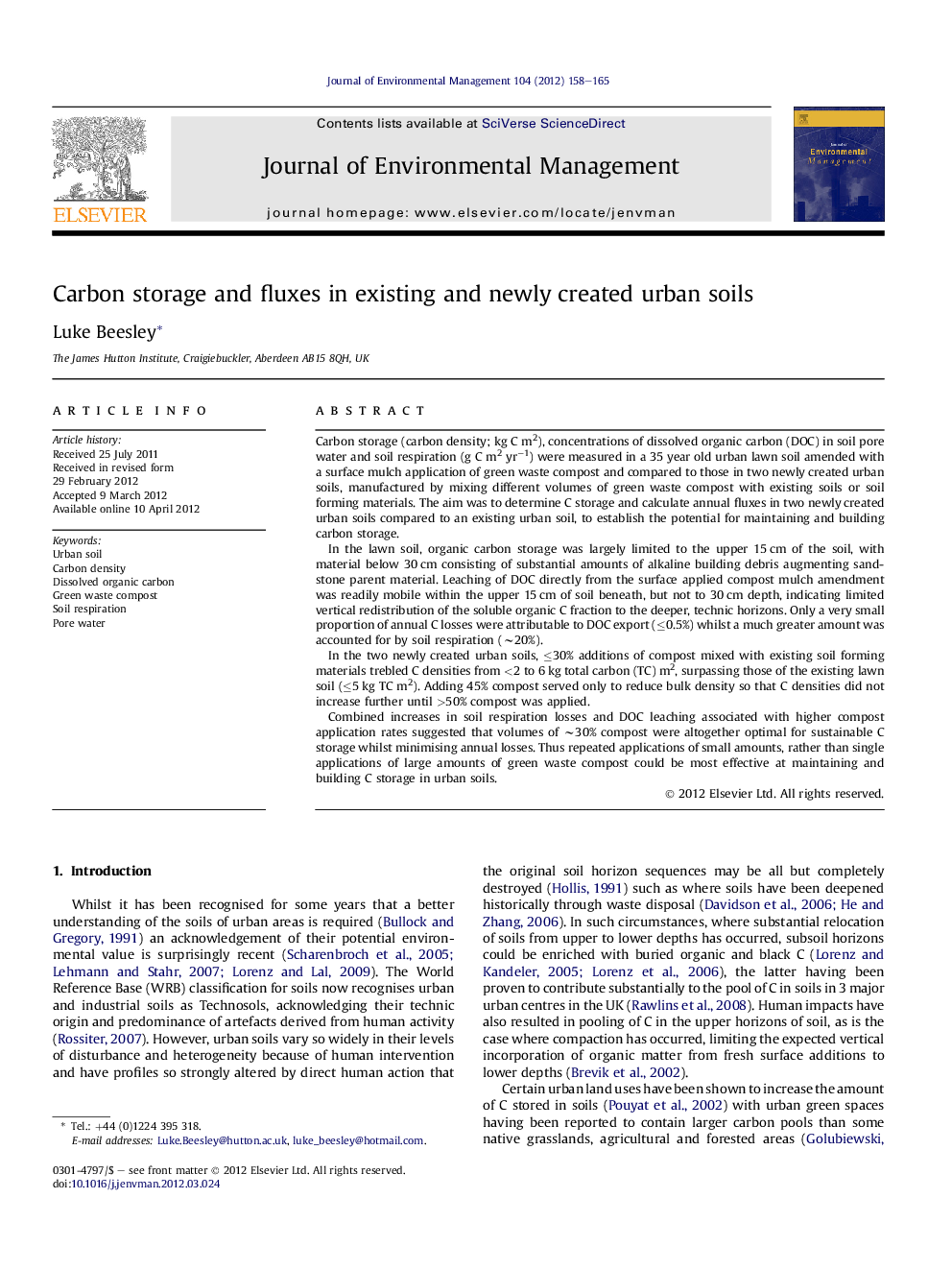| Article ID | Journal | Published Year | Pages | File Type |
|---|---|---|---|---|
| 1056799 | Journal of Environmental Management | 2012 | 8 Pages |
Carbon storage (carbon density; kg C m2), concentrations of dissolved organic carbon (DOC) in soil pore water and soil respiration (g C m2 yr−1) were measured in a 35 year old urban lawn soil amended with a surface mulch application of green waste compost and compared to those in two newly created urban soils, manufactured by mixing different volumes of green waste compost with existing soils or soil forming materials. The aim was to determine C storage and calculate annual fluxes in two newly created urban soils compared to an existing urban soil, to establish the potential for maintaining and building carbon storage.In the lawn soil, organic carbon storage was largely limited to the upper 15 cm of the soil, with material below 30 cm consisting of substantial amounts of alkaline building debris augmenting sandstone parent material. Leaching of DOC directly from the surface applied compost mulch amendment was readily mobile within the upper 15 cm of soil beneath, but not to 30 cm depth, indicating limited vertical redistribution of the soluble organic C fraction to the deeper, technic horizons. Only a very small proportion of annual C losses were attributable to DOC export (≤0.5%) whilst a much greater amount was accounted for by soil respiration (∼20%).In the two newly created urban soils, ≤30% additions of compost mixed with existing soil forming materials trebled C densities from <2 to 6 kg total carbon (TC) m2, surpassing those of the existing lawn soil (≤5 kg TC m2). Adding 45% compost served only to reduce bulk density so that C densities did not increase further until >50% compost was applied.Combined increases in soil respiration losses and DOC leaching associated with higher compost application rates suggested that volumes of ∼30% compost were altogether optimal for sustainable C storage whilst minimising annual losses. Thus repeated applications of small amounts, rather than single applications of large amounts of green waste compost could be most effective at maintaining and building C storage in urban soils.
► Carbon storage and fluxes were measured in 3 urban soils with compost additions. ► Volumes of compost, up to 30%, increased net C storage. ► Higher volumes of compost reduced bulk density, reducing net C storage. ► Similar annual losses of C, as a proportion of storage, were found in soils with or without compost. ► Moderate applications of greenwaste compost could help to build C storage in some urban soils.
